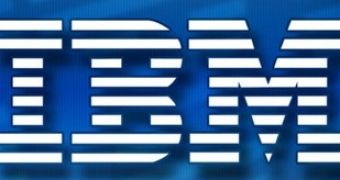Today IBM Corp. announced a next-generation Cell processor, geared especially for computer servers. The PowerXCell 8i is intended to provide sustained petaflops performance and it is tested on the Road Runner system for the world's first supercomputer status. IBM wants its servers to pass the petaflops barrier and to have hundreds of users installing on them a two-socket board with the new Cell chips, able to bring "supercomputing for the masses."
The 65 nanometer process technology has been used for the new chip to reduce the power consumption while keeping the same 3.2GHz frequency featured by the 90nm chip. IBM is now able to put two chips on a single board and still have a power consumption under 250 W as required by its BladeCenter servers. The new Cell supports 32GB of RAM (as compared to 2GB for the original Cell) and mainstream DDR2 memory. This helps supporting large amounts of data sets many high-end technical computing applications require.
According to Jim Comfort, vice president of workload optimized systems in IBM's Systems and Technology Group, the chip is now able to deliver up to 190 TFlops of double precision floating point performance, a level that is 5 times higher than the previous one, due to expanded support on the eight specialty cores used on Cell.
IBM has also enhanced its BladeCenter systems to easily support servers using both Power or X86 processors and Cell-based cards by expanding the programming tools and management software. "For example, you can use our API to send Monte Carlo functions to the Cell" without disrupting existing x86 or Power code, said Comfort.
The QS22 adapter card will be launched by the end of the month and will have a $9,995 price tag. IBM intends to have the cards on seven core markets in real-time analytics and digital media. "We think the total available market is quite large approaching $8-10 billion", said Comfort. Segments from finance, medical and seismic applications are included in the analytical markets. "There is a real value proposition here", said Comfort. The cards are also intended to trans-coding or aggregating content in digital media. "Everyone wants to get as much H.264 content down for high definition media downs their fixed pipes as possible", he said.
IBM has big future plans with Cell. The company wants to introduce versions with 16 and 32 vector processing cores, all in the multiple of eight field. The chips will feature support for the same code available for today's eight vector core chips that have one IBM Power core for an overall controller.
The chips could adopt either a multi-chip architecture, with two interconnected silicon dice, or a monolithic structure. The future might bring Sony to use the 65nm versions of Cell to put together two processors into a next-generation PlayStation. According to Comfort, video-game consoles will still be used by IBM as platforms for the first versions of the high-end chips in large volumes and later to make them available for high-end computing systems in lower volume uses.
Two versions of single-chip Cell cards have already been rolled-out by IBM for its servers, yet the company managed to sell only small amounts of them until now and one of the reasons for this, according to Comfort, is the fact that the cards are not enhanced to fully fulfill the needs of business computing.
Yet, more than 50 IBM customers are currently working with servers powered by Cell chips. Also, more than 20 IBM partners have been developing tools and software for Cell.
Almost 16,000 of the new Cell chips will probably be used by Los Alamos National Labs to power the Road Runner system expected to break the petaflop performance barrier. The system will provide two times more power than the most powerful system today as ranked by the Top 500 list. This would be IBM BlueGene/L system, installed at the Lawrence Berkeley Lab.
Road Runner "could be the new fastest machine in the world", said Comfort. "Most of the other petaflops efforts are aiming at coming online next year."

 14 DAY TRIAL //
14 DAY TRIAL //